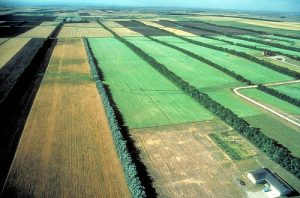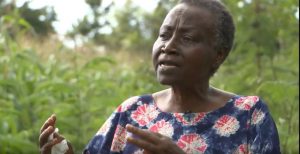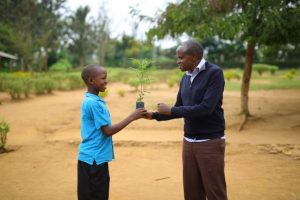
When Holly and Barry Mawby arrived on their farm in Esmond, North Dakota in 2011, they discovered windbreaks that had not been cared for in decades. They quickly realized that they were in jeopardy of losing what little protection they had from the brutal winds.
Farmers are challenged by ever-increasing production demands under the uncertainties of changing weather conditions, climates, and markets. Agroforestry, the intentional integration of trees and shrubs into crop and livestock production systems, can enhance not only the resiliency, but also the productivity and profitability of agricultural operations and lands.
The US Forest Service has published a new report: Agroforestry: Enhancing Resiliency in U.S. Agricultural Landscapes Under Changing Conditions that presents the first-ever synthesis on agroforestry as a mechanism for improving the resiliency of farm lands. Drawing upon the most current science, the report shows how tree-based management strategies can improve agricultural production and resiliency, especially under changing environmental conditions.
Agroforestry is not a new idea; it has played a prominent role in the history of large-scale U.S. agricultural landscape management. In the 1930s, the Prairie States Forestry Program planted over 18,600 miles of windbreaks in the Great Plains to minimize soil erosion during the Dust Bowl period.
Practices like windbreaks and alley cropping, in which trees or shrubs are grown around or among crops, can reduce wind velocity, decrease erosion, and improve soil health. Silvopasture, the sustainable production of livestock, trees, and cattle on the same unit of land, allows trees to be managed for timber or other tree crops while providing shade and shelter for livestock.
Riparian buffers – vegetated areas along streams and other water bodies – stabilize banks, reduce nutrient runoff, and provide shade that helps keep rising stream temperatures in check. Forest farming, or the cultivation of high-value crops like ginseng or shitake mushrooms under a forest canopy, is another agroforestry tool used to diversify farm portfolios and provide economic stability for landowners.
Originally published on the USDA website
Click here for the full story.



 Improved soil fertility, suppression of striga weeds, increased crop yields, nutritious fodder for livestock, and more firewood, are just some of the benefits farmers derive from intercropping fertiliser shrubs and crops on farms.
Improved soil fertility, suppression of striga weeds, increased crop yields, nutritious fodder for livestock, and more firewood, are just some of the benefits farmers derive from intercropping fertiliser shrubs and crops on farms. Jean Baptiste Mutabaruka is on the road to the local bank, again. When he gets there, he will inquire once more about raising money for an idea he thinks will reduce poverty in his small farming community of 60,000 in the province of Eastern Rwanda.
Jean Baptiste Mutabaruka is on the road to the local bank, again. When he gets there, he will inquire once more about raising money for an idea he thinks will reduce poverty in his small farming community of 60,000 in the province of Eastern Rwanda.